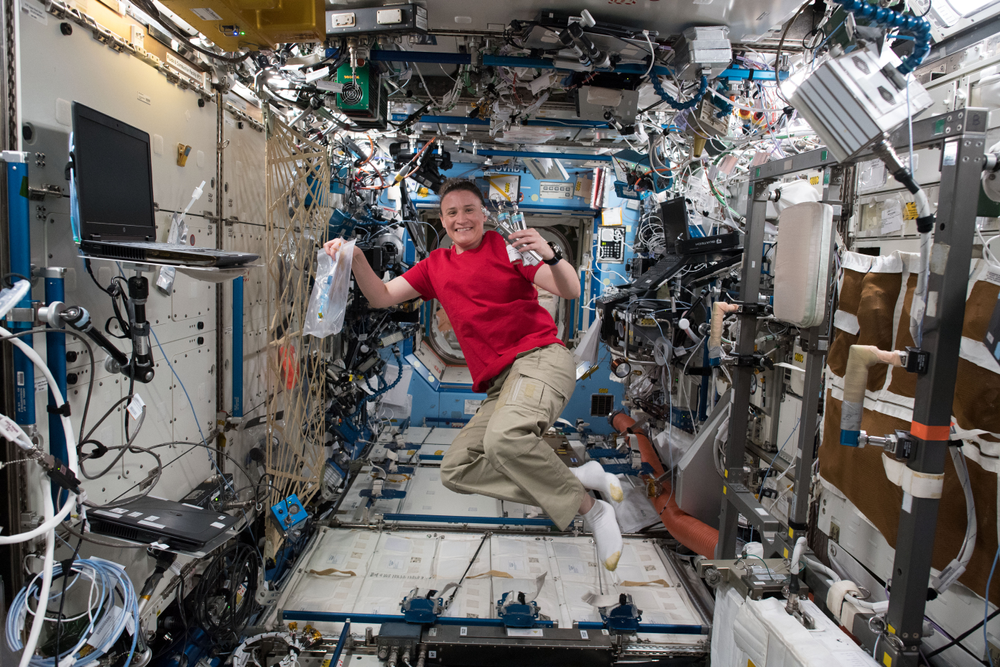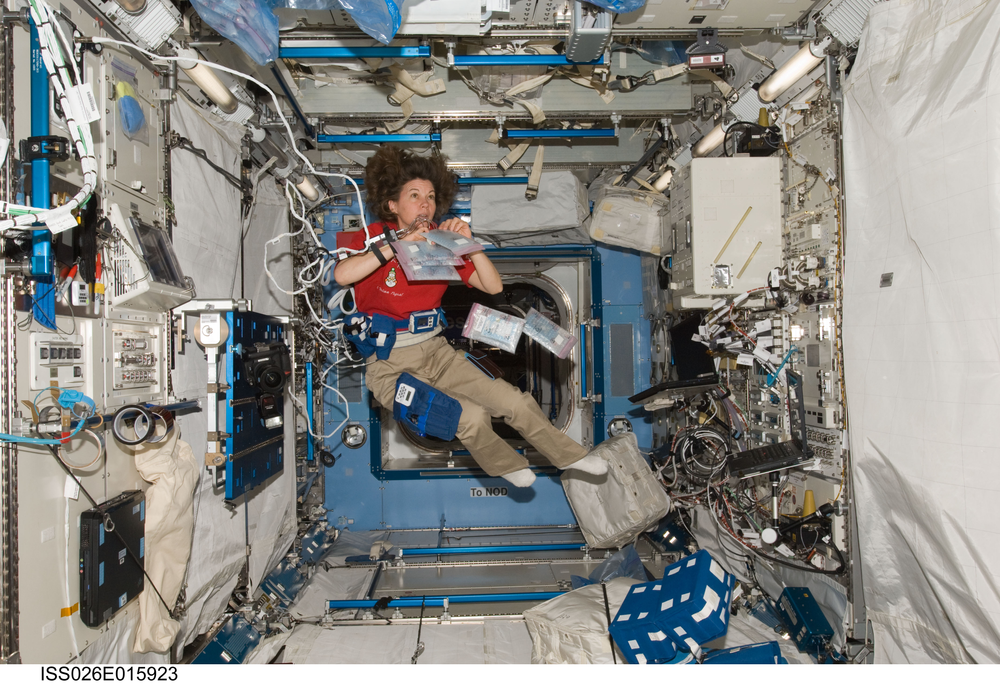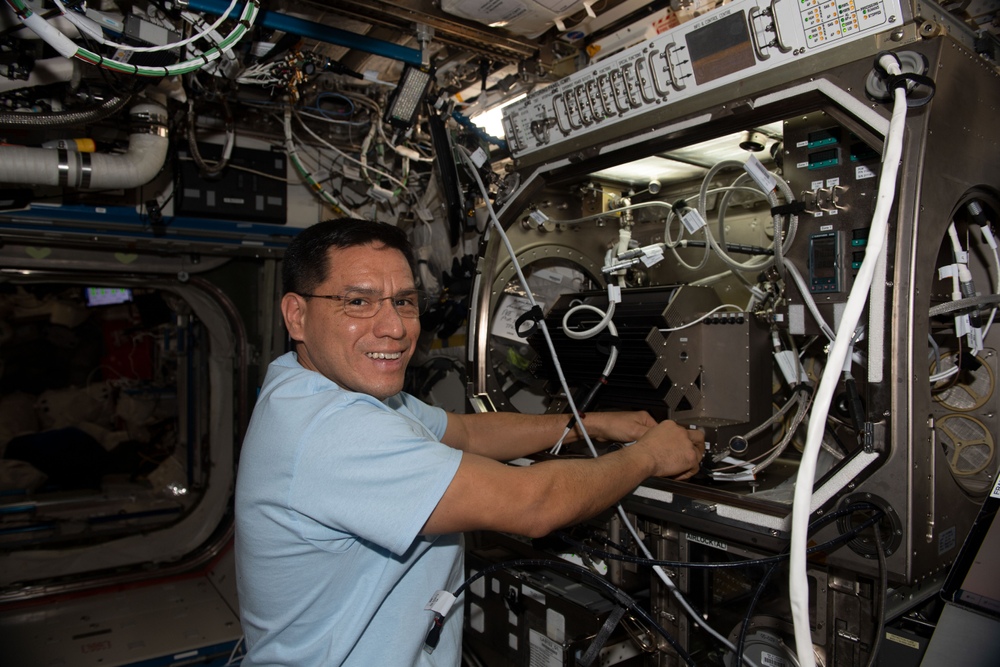Station Science Top News: Sept. 21, 2023
Astronauts showed decreased fat accumulation in the bone marrow of their lower vertebrae after spaceflight. Fat cells in the bone marrow are thought to directly affect blood cell production. These results could improve understanding of blood cell production in microgravity and lead to mitigation strategies for issues such as spaceflight anemia and susceptibility to infection on future missions.
The MARROW investigation examined how microgravity affects bone marrow and blood cell production. The decreased fat accumulation reported by researchers may result from higher-than-normal marrow metabolism needed to produce red blood cells in response to in-flight deconditioning. This deconditioning resembles the effects of prolonged bed stays, reduced mobility, and aging on Earth. A better understanding of the relationship between fat cells and blood-producing cells in the bone marrow is key to developing comprehensive countermeasures for effects seen in space and on Earth.

***
Researchers reported that the workload on cardiac muscle was lower during spaceflight compared to preflight, but they found no significant cardiac atrophy. This finding suggests that current exercise regimes help maintain cardiac mass and volume and that astronauts may be able to withstand longer missions to Mars if they regularly follow these regimes.
Integrated Cardiovascular examined cardiac atrophy (decrease in the size of the heart muscle) associated with long-duration space flight to identify the mechanisms of this atrophy and its consequences. Cardiac mass responds to prolonged changes in cardiac loading conditions, and researchers had speculated that weightlessness-induced changes combined with physical inactivity would lead to cardiac atrophy during missions. However, they found preservation of cardiac structure and function after long-duration (up to six months) spaceflight, likely due to the effectiveness of current exercise countermeasures. Access to appropriate exercise appears to be essential for astronaut health and long-term mission success.

***
Researchers compared the movement of vapor in microgravity on an asymmetric sawtooth microstructure with movement on a flat baseline surface and found that vapor bubbles ride the crests of the sawtooth structure but remain stationary on the flat surface. These observations could enable use of two-phase flow to dissipate heat from electronic devices in space.
PFMI-ASCENT demonstrates a passive cooling system for electronic devices in microgravity that uses a micro-structured jagged surface. When fluids boil over flat heated surfaces in microgravity, the absence of buoyancy prevents bubbles from detaching from the surfaces. These stagnant bubbles form a large vapor mass, causing a considerable rise in surface temperature that can lead to damage in heat-producing devices. Adding microscopic ratchets on the surface could provide a passive way to move away vapor bubbles and prevent this damage. The ability to cool devices without external pumps or complicated flow loops is especially critical in space, where availability of electrical power is limited.








